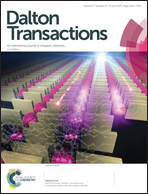Electrostatic self-assembled nanoparticles based on spherical polyelectrolyte brushes for magnetic resonance imaging†
Abstract
Magnetic resonance imaging (MRI) is one of the most important medical imaging techniques for clinical diagnosis. Contrast agents (CAs) are commonly necessarily used to enhance the imaging quality of MRI and differentiate diseased tissues from normal ones. Herein, we introduced a macromolecular carrier, spherical polyelectrolyte brushes (SPBs), which consists of a solid polystyrene (PS) core and polyacrylic acid (PAA) chains as a brush layer to host Gd(III) complexes. The cationic Gd(III) complex Gd-DTPA-NO-C4 was synthesized through a 6-step approach and then formed electrostatic self-assemblies with SPBs to afford magnetic assemblies. The regular appearance of the core–shell type structure of the assemblies was confirmed by TEM and SEM. Besides, a remarkable enhancement in relaxivity up to 62 mM−1 s−1 of these assemblies was determined, much higher than that of clinically used small molecule CAs (4–5 mM−1 s−1). It is noteworthy that the assemblies exhibit non-cytotoxicity even at the concentration of Gd(III) up to 150 μM, showing great potential for clinical MRI applications.

- This article is part of the themed collection: Molecular metal-containing soft materials


 Please wait while we load your content...
Please wait while we load your content...